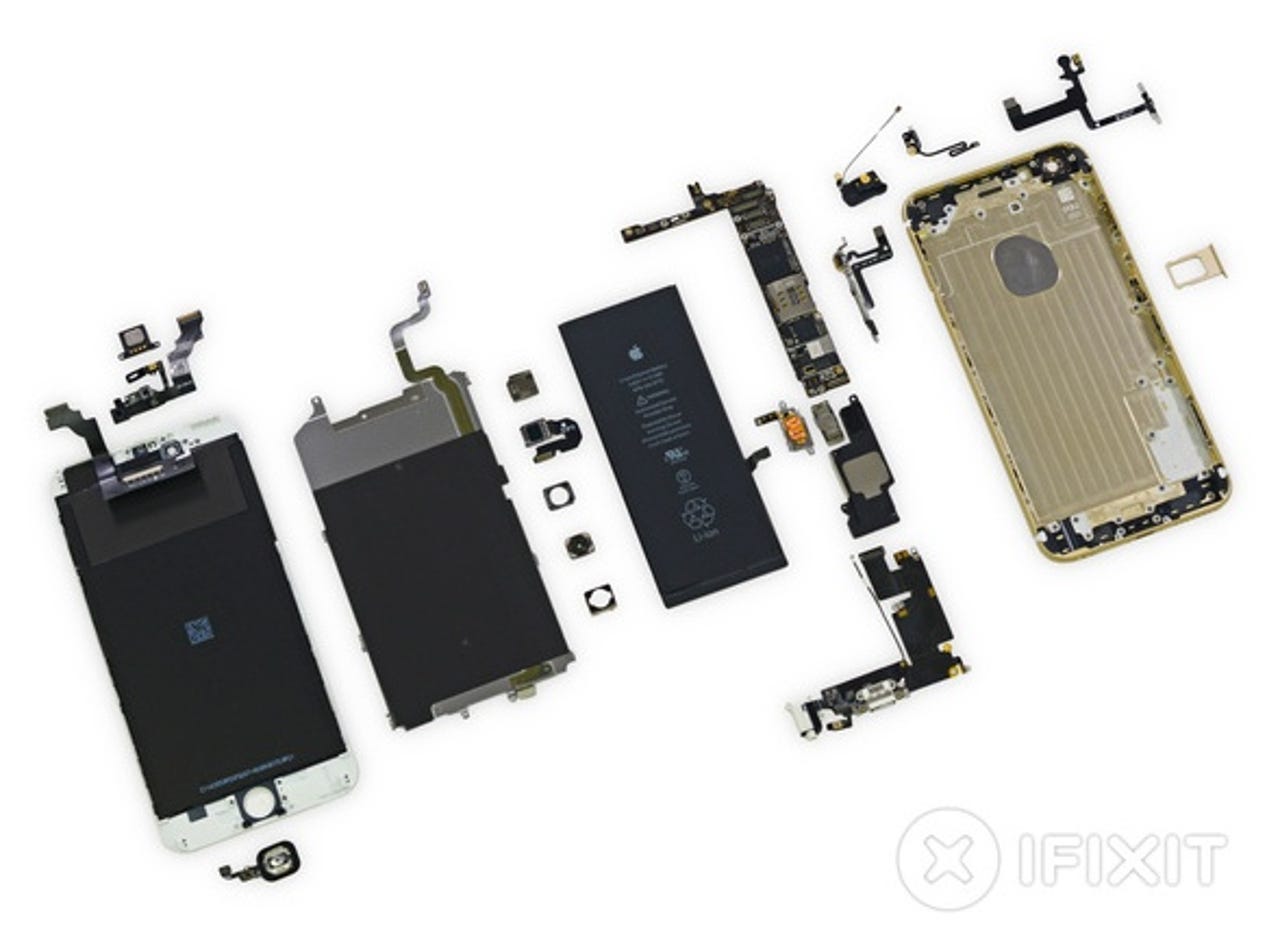Teardown estimates iPhone 6 costs $200 to make; iPhone 6 Plus just $15 more


Apple spends about $200 on parts and manufacturing to build the iPhone 6 and just $15 more on the bigger iPhone 6 Plus, according to a teardown analysis.
Attempting to estimate Apple's profits per unit on the iPhone 6 and 6 Plus, analysts at research firm IHS have conducted their dissection of Apple's new devices, estimating component and manufacturing costs of $200 for the 16GB iPhone 6 and $215 for the 16GB iPhone 6 Plus.
The teardown looked at the guts of Sprint versions of the two models, finding identical component costs in both devices except for the larger display and more expensive battery and camera in the iPhone 6 Plus.
IHS estimates that the 5.5-inch display, the biggest ticket item in the iPhone 6 Plus, costs $52.50 while the 4.7-inch display in the iPhone 6 costs $45. Other sources of difference come from the iPhone 6 Plus' slightly more expensive battery and camera.
Given that the analysis is an estimate of the gross margin — it doesn't include research and development, licensing, software, sales and marketing, and so on — it is only a rough ball park figure and one that some believe offers little meaning as to the true cost.
Nonetheless, according go IHS, it does reveal a new approach by Apple in that it's charging a premium not just for higher capacity memory, as it's traditionally done, but also for a larger display. The iPhone 6 Plus starts at $749 off-contract in the US — $100 more than the iPhone 6, despite it only costing $15 more in materials and manufacturing.
The new pricing strategy might go some way to offsetting the smaller gross margin on the iPhone 6 compared to the iPhone 5S, which retailed for $649 but only cost $195 in materials and manufacturing, according to an earlier IHS teardown.
"In the past, the premium versions of iPhone offered higher memory configurations for additional profit. While Apple continues this memory strategy, the company is also taking a similar approach with the iPhone Plus, structuring its pricing to add bottom-line profit on models that have a very desirable feature: a large phablet-sized display," said Andrew Rassweiler, senior director of cost benchmarking services for IHS.
On the other hand, given reports of the iPhone 6 Plus bending in people's pockets, perhaps Apple should have chosen a harder and possibly more expensive material than aluminium for its backplate.
The other notable finding is around the chips in the smartphones. Despite Apple and Samsung's smartphone wars, Samsung had remained Apple's sole chip maker in earlier models. Not so in the iPhone 6 and 6 Plus.
Another teardown by Chipworks identified that Apple's new A8 processor was built by Taiwan Semiconductor Manufacturing (TSMC). IHS backed this up, but says that Apple has split orders for the A8 between TSMC and Samsung.
Rassweiler told Recode that Samsung retained about 40 percent of orders for the A8, while TSMC built the rest.
Read more on the iPhone 6
- What's inside the iPhone 6 Plus?
- iPhone 6: Cool features you should be using
- Is the iPhone 6 Plus just big, or is it too big?
- Apple iPhone 6 Plus: In pictures and screenshots
- In first weekend of sale, Apple sells 10 million iPhone 6, 6 Plus devices
- Apple iPhone 6 Plus (review): Bigger display, longer-lasting battery steals the show